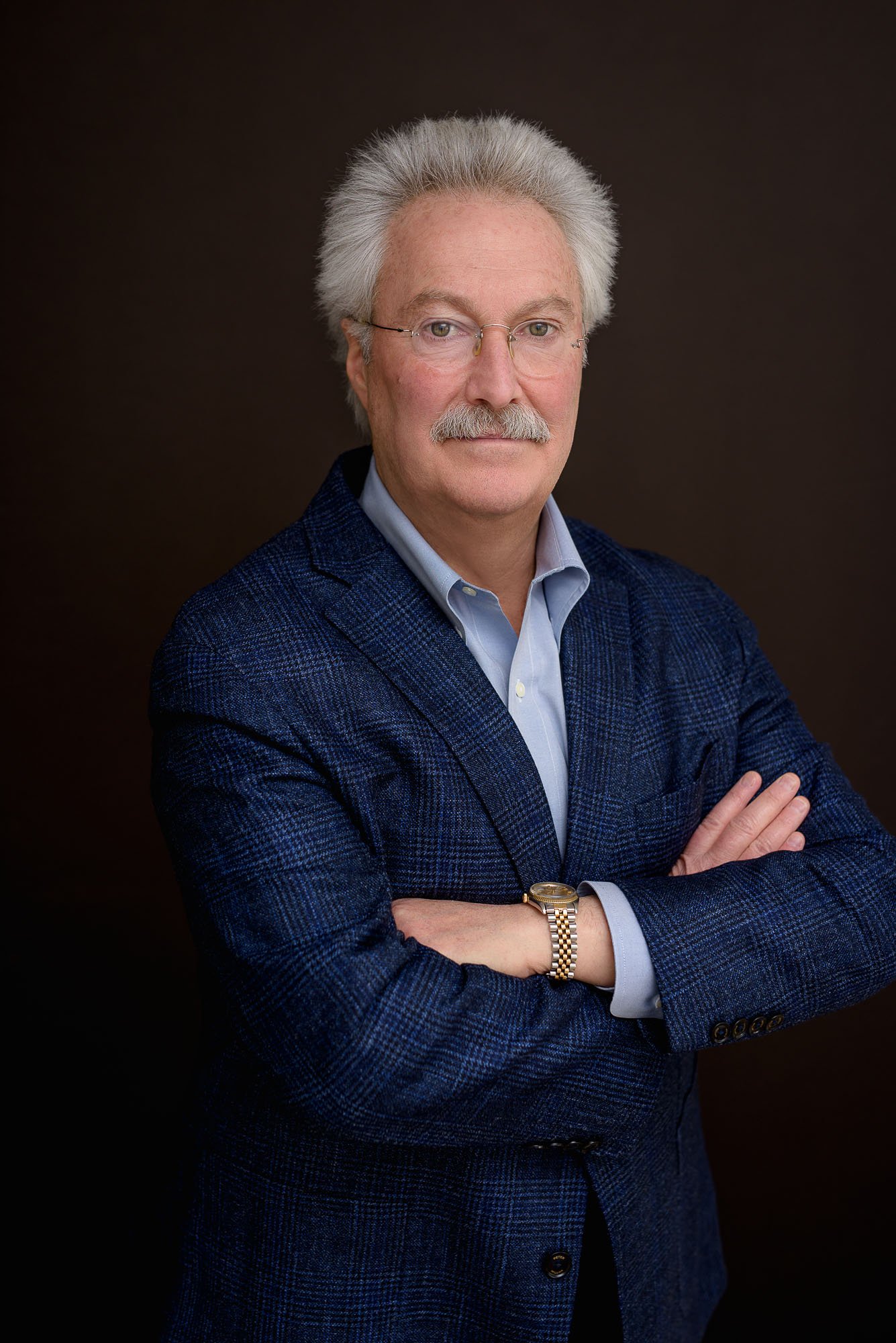The Psychology of Headshots: Deciphering the Subtle Messages Behind Your Facial Expression
In the world of professional photography, a headshot is more than just a picture; it’s a tool for expressing your personality, character, and professionalism to the outside world. What makes headshots really interesting is how facial expressions can reveal so much about a person to the viewer. In this Blog post, we'll go over the subtle details of facial expressions, supported by scientific research, to reveal just how much they can influence the way other people perceive you.
The Genuine Smile
Psychological research confirms that smiles are universally seen as signs of friendliness and approachability. Smiles, especially the Duchenne smiles that involve both the mouth and eyes, activate the brain's reward center, leading to positive perceptions and trust.
Duchenne smiles, which engage both the muscles around the mouth and the eyes, are perceived as more sincere and warm compared to forced or polite smiles. This is also often called “smiling with the eyes” or “smizing” as coined by Tyra Banks. These real smiles stimulate the release of neurotransmitters like dopamine in humans, which is a hormone that is linked to positive emotions and feelings of reward. When your headshot displays an authentic smile, it conveys a sense of warmth, approachability, and a genuine willingness to connect with others and this friendly and inviting expression can have a significant impact on how people perceive you in a professional setting.
Sitation: Ekman, P., & Davidson, R. J. (1993). Voluntary smiling changes regional brain activity. Psychological Science, 4(5), 342-345.
The Confident and Trustworthy Look
When your facial expression appears neutral but composed, it conveys a sense of competence and reliability to others. This means your face doesn't show signs of stress or negativity, making people perceive you as trustworthy and capable.
A neutral expression in your headshot doesn't mean you lack emotion; it simply means you appear balanced and confident. When your headshot reflects this sense of calm confidence, it sends a message of competence and reliability to those who see it. People interpret this expression as a sign that you are trustworthy and dependable, without any hidden motives or negative emotions. Think of it as a "poker face" that signals a steady and trustworthy demeanor.
The tricky aspect of a neutral expression, however, is that what we think is neutral can actually come across as angry, mad, or dissatisfied in photos. This is why I work very closely with clients to fine tune this specific expression so they can look relaxed and friendly without going into a smile. It’s something that’s actually much harder than you would think!
Sitation: Todorov, A., Baron, S. G., & Oosterhof, N. N. (2008). Evaluating face trustworthiness: A model based approach. Social Cognitive and Affective Neuroscience, 3(2), 119-127.
Friendly Eye Contact
Making eye contact in your headshot can greatly impact how trustworthy and confident you appear. When you maintain direct eye contact, it demonstrates that you are attentive and engaged, which is crucial in professional interactions.
Eye contact is a powerful way to communicate without words in any interaction. Studies have shown that when people lock eyes, it leads to the release of oxytocin, often called the "bonding hormone." Oxytocin is associated with trust, empathy, and forming strong social connections. So, when your headshot includes direct eye contact, it tells others that you are not only paying attention but also that you can be trusted. This combination is especially important in professional situations where trust and confidence plays a vital role.
Sitation: Domes, G., Heinrichs, M., Michel, A., Berger, C., & Herpertz, S. C. (2007). Oxytocin improves “mind-reading” in humans. Biological Psychiatry, 61(6), 731-733.
The Reflective Look
When you have a contemplative gaze in your headshot, it often makes people see you as highly intelligent. A thoughtful, reflective expression in your headshot suggests that you are a person who thinks deeply and analytically. This perception of depth and intellectual engagement can be highly advantageous in fields that place a premium on expertise and critical thinking. Think of academia, research, or strategic leadership roles, for instance. People looking at your headshot are more likely to see you as someone who brings a wealth of knowledge and insight to your work and interactions.
Sitation: Hassabis, D., Spreng, R. N., Rusu, A. A., Robbins, C. A., Mar, R. A., & Schacter, D. L. (2014). Imagine all the people: How the brain creates and uses personality models to predict behavior. Cerebral Cortex, 24(8), 1979-1987.
A Playful Smirk
A playful smirk in your headshot can add a delightful touch of charm and approachability. This expression suggests that you have a sense of humor and a relaxed, friendly nature. The Duchenne smirk, which involves the eye muscles crinkling, is often associated with genuine smiles but can also be “faked” with some direction from the photographer. When people see this in your headshot, they are more likely to view you as someone who is easy to approach, amicable, and enjoyable to collaborate with. This can be especially advantageous in creative fields or positions where being affable and personable is highly valued.
Sitation: Martin, M. W. (2011). The anatomy of a smile: Its importance in the workplace. International Journal of Business and Social Science, 2(15), 201-208.
Focused Determined Look
A serious, focused expression in your headshot is a clear sign of your dedication to your objectives. It says that you take your work seriously and that you are resolute in achieving your goals. This determination and strong work ethic are highly valued in professional settings where precision, diligence, and unwavering commitment are crucial. Your headshot becomes a visual representation of your serious intent, which can command respect and convey a strong sense of professionalism.
Sitation: Treadway, M. T., Buckholtz, J. W., Martin, J. W., Jan, K., Asplund, C. L., Ginther, M. R., ... & Zald, D. H. (2012). Corticolimbic gating of emotion-driven punishment. Nature Neuroscience, 15(11), 1472-1475.
The Real You
Authenticity is a crucial element in creating effective headshots. Psychological studies reveal that genuine expressions foster real connections. When people sense authenticity, they are more inclined to engage and establish a meaningful connection.
When your headshot genuinely reflects your true self, it makes it easier for people to connect with you, both personally and professionally. An authentic expression makes you relatable and trustworthy. Research has confirmed that people are naturally drawn to authenticity because it signals sincerity and honesty. So, when you embrace your unique qualities and let your true personality shine through in your headshot, you create a genuine and lasting connection with those who see it.
Sitation: Haidt, J., & Joseph, C. (2007). The moral mind: How 5 sets of innate intuitions guide the development of many culture-specific virtues, and perhaps even modules. In P. Carruthers, S. Laurence, & S. Stich (Eds.), The Innate Mind (Vol. 3, pp. 367-391). Oxford University Press.
The science behind headshots shows that facial expressions can say a lot about your professional identity without words. Scientific studies highlight just how much these expressions affect people, emphasizing the need to choose an expression that fits your personal brand and career goals. When your facial expression aligns authentically with who you are, your headshot becomes more than just a visually appealing picture; it becomes a strategic tool for making a strong and professional impression on those who see it.






